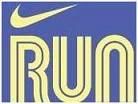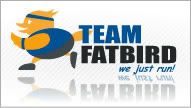Training Tip of The Month: Run Like An Egyptian
--- Extracted From The Runners' World Magazine ---
Run Like an Egyptian
Use our training pyramid to create the perfect running schedule by: Ed Eyestone
Quality: It's the time you spend with your family, or the kind of engineering you want in a new car. It's also the type of running you have to do if you want to run and race well.
So what distinguishes quality running from plain old running? In a word: intensity. Quality running demands an increased effort above your daily, comfortable pace. Whether it be through speed work or hills, quality running increases your workload, and when done regularly, it boosts your performance. That said, there's a limit to how much quality you can safely and effectively pack into every week.
If we built a model representing the weekly mileage of most elite runners, it would resemble an Egyptian pyramid (talk about quality engineering). Successful runners build a solid aerobic base by running a large percentage of their weekly miles at a steady, comfortable pace. This "base mileage" should be the foundation of your own training pyramid. And the broader the base, the higher your pyramid can rise as you add quality running into the mix.
As your training pyramid ascends, each new level represents an increase in running intensity. The higher you go, the greater your perceived effort (which is just a fancy term for how hard it feels when you're running). And just as a pyramid tapers as it ascends, the amount you run at higher intensities is less than the level beneath it.
I once had a coach who would quiz me about my perceived effort during various workouts. Since I usually didn't have the breath or desire to describe in detail the particular circle of hell he was putting me through, we created a numbering system ranging from one to six to describe levels of running intensity. Here's a breakdown of these six levels, along with estimates of how much of your weekly mileage should be completed at each intensity level.
The Base
1. Very easy: 60 to 65 percent of your maximum heart rate. You feel as if you can maintain this pace all day long. It's where you do your warmup and cooldown miles. It's also an excellent recovery pace when you're jogging between speed repeats.
2. Easy: 65 to 70 percent of your maximum heart rate. Aerobic conditioning occurs at this pace. Do runs at this easy pace when you're recovering from a hard workout the previous day. Also, maintain this pace for the early miles of a long run.
3. Moderate: 70 to 80 percent of your maximum heart rate. The majority of your base mileage should be done at this solid training pace. Long runs should also finish in this zone. The base of your training pyramid is built with miles run at levels 1,
2, and 3, which, taken together, should account for about 80 to 85 percent of your overall mileage.
The Quality Zones
4. Hard: 80 to 90 percent of your maximum heart rate. This is the zone that improves your lactate threshold, or how fast you can run without accumulating a debilitating amount of lactic acid. Steady-state runs done at marathon race pace, tempo runs, and tempo-pace intervals are all examples of running in this quality zone. Workouts done at this pace should account for roughly 10 to 12 percent of your weekly mileage.
5. Very hard: 90 to 97 percent of your maximum heart rate. Long intervals, such as mile repeats, 1200s, 1000s, and 800s run at your 5-K or 10-K race pace will get you into this zone. Running at this intensity improves your max VO2 and should total 5 to 7 percent of your weekly mileage.
6. So hard you should get paid: 98 to 100 percent of your maximum heart rate. Running 400-, 300-, or 200-meter repeats at anywhere from your 800-meter to mile race pace should get you into this zone. Workouts at this intensity improve neuromuscular coordination and accelerate leg turnover. Only 1 to 3 percent of your weekly mileage should be run at this level.
Always do one or two runs in zones 1, 2, or 3 after running in zones 4, 5, or 6. Stick to these guidelines, and you'll build a training pyramid that will take your running to new heights.
Ed Eyestone, a two-time Olympic marathoner and men's cross-country coach at Brigham Young University, has a master's degree in exercise physiology















0 Comments:
Post a Comment
<< Home